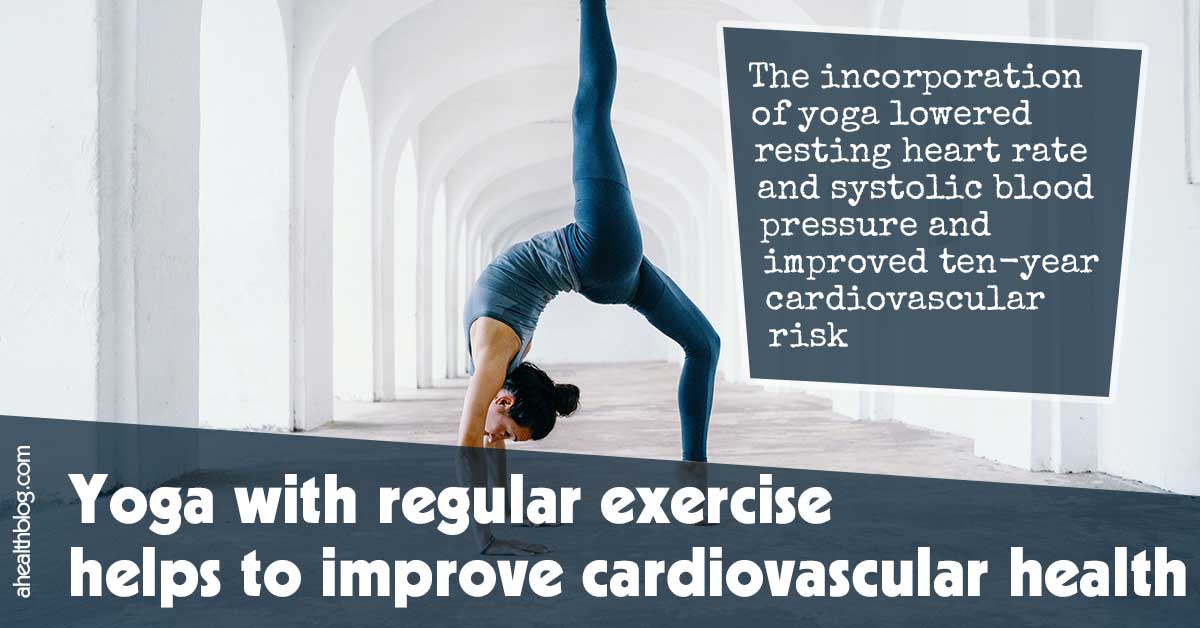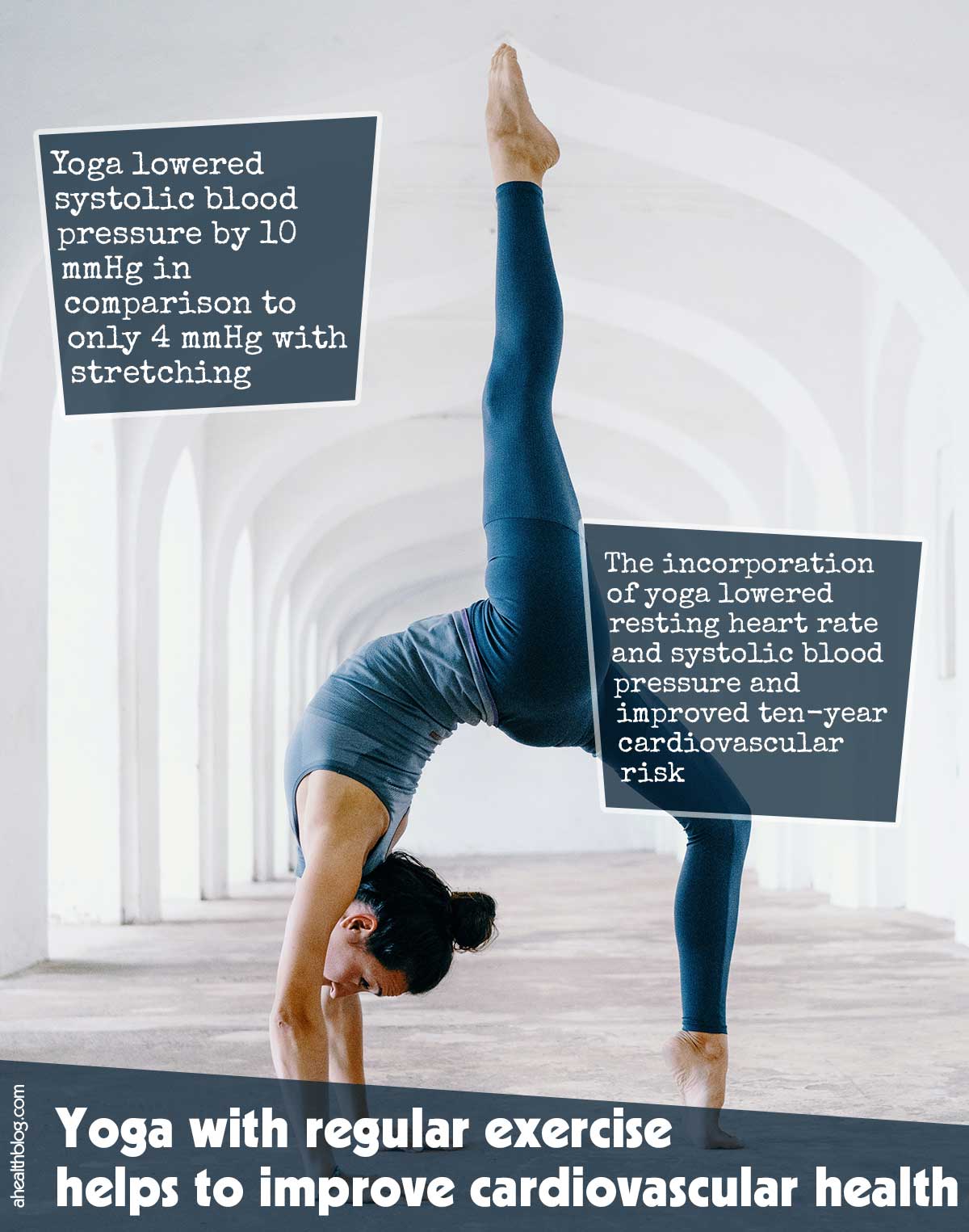A 3-month preliminary study of individuals with high blood pressure shows that the inclusion of yoga in a regular exercise training routine supports cardiovascular health and well-being and is better than standard stretching exercises. The incorporation of yoga lowered resting heart rate and systolic blood pressure and improved ten-year cardiovascular risk.1✅ JOURNAL REFERENCE DOI: 10.1016/j.cjca.2022.09.019
Yoga is an all-around lifestyle activity that can positively improve cardiovascular health and well-being. Physical exercises like stretching and the physical aspects of yoga have a number of similarities, as well as important differences.
The goal of this preliminary study was to establish whether incorporating yoga into a regular exercise routine decreases cardiovascular risk. Although there’s considerable evidence that yoga practice and exercise have equivalent or/and superior cardiovascular benefits, there’s significant variability in types of yoga, frequency, components, duration, session length, and intensity.
The researchers wanted to make use of a thorough scientific approach to determine cardiovascular risk factors for which yoga can benefit individuals at risk and ways it could be used in a healthcare environment such as a primary prevention program.
The researchers recruited 60 people with previously diagnosed hypertension and metabolic syndrome for an exercise training program. Individuals were separated into 2 groups throughout the 3-month treatment program and performed 15 minutes of either stretching or structured yoga together with 30 minutes of aerobic exercise 5 times each week.
High-sensitivity C-reactive protein, anthropometry, blood pressure, lipid and glucose levels as well as the Reynolds and Framingham Risk Score measurements were taken. There was no difference at baseline between groups in sex, age, BMI, smoking rates, resting heart rate and pulse pressure, and resting diastolic and systolic blood pressure.
After 3 months, there was a reduction in both groups in resting diastolic and systolic blood pressure, average heart rate, and arterial blood pressure. Yoga however lowered systolic blood pressure by 10 mmHg in comparison to only 4 mmHg with stretching. Yoga also lowered resting heart rate and ten-year cardiovascular risk evaluated by making use of Reynold’s Risk score.
Although yoga has been found to benefit individuals with high blood pressure, the exact mechanism isn’t completely understood. This preliminary randomized study demonstrates that its benefits can’t be simply because of stretching alone.
This study provides evidence for one more non-pharmacologic treatment option for reducing cardiovascular risk and improving blood pressure control in individuals with hypertension, in the setting of a primary prevention exercise program.
As seen in several studies, it’s recommended that individuals try to find exercise and stress relief for the management of high blood pressure and cardiovascular disease in whatever form they find most appropriate. The study demonstrates that a structured yoga practice can be a better addition to aerobic exercise compared to just muscle stretching.




